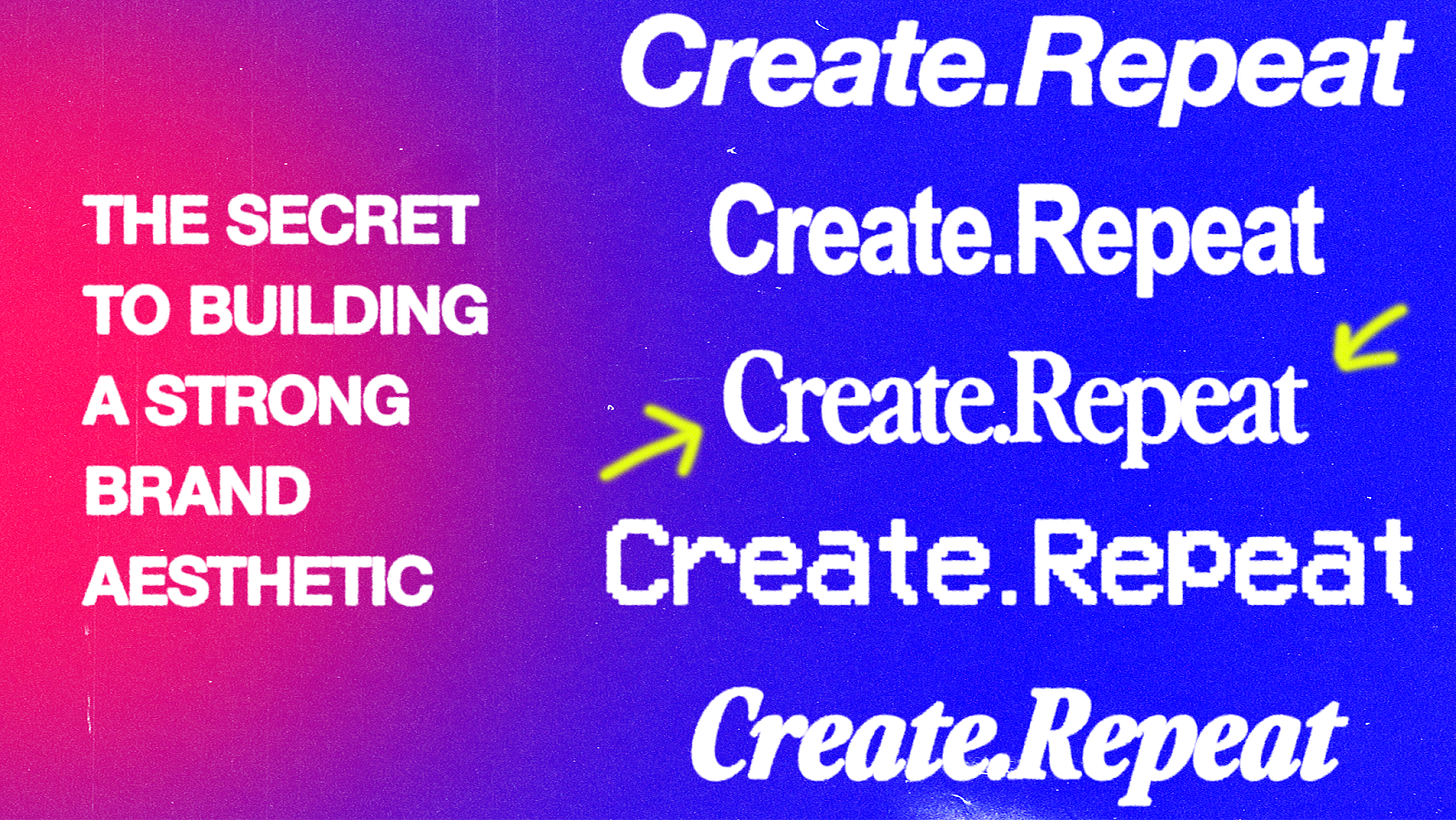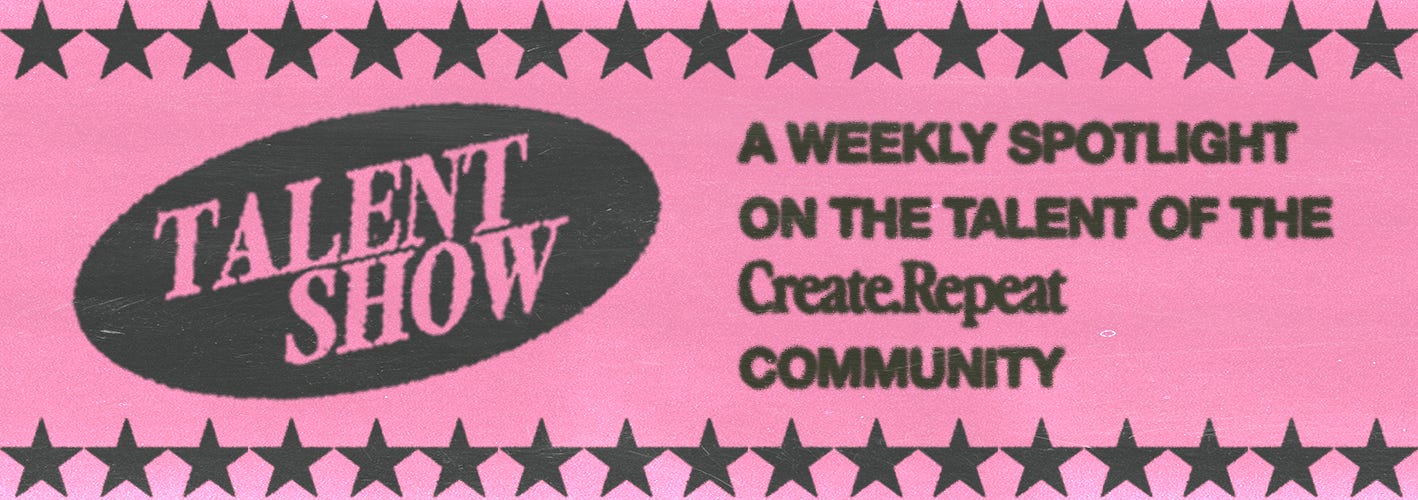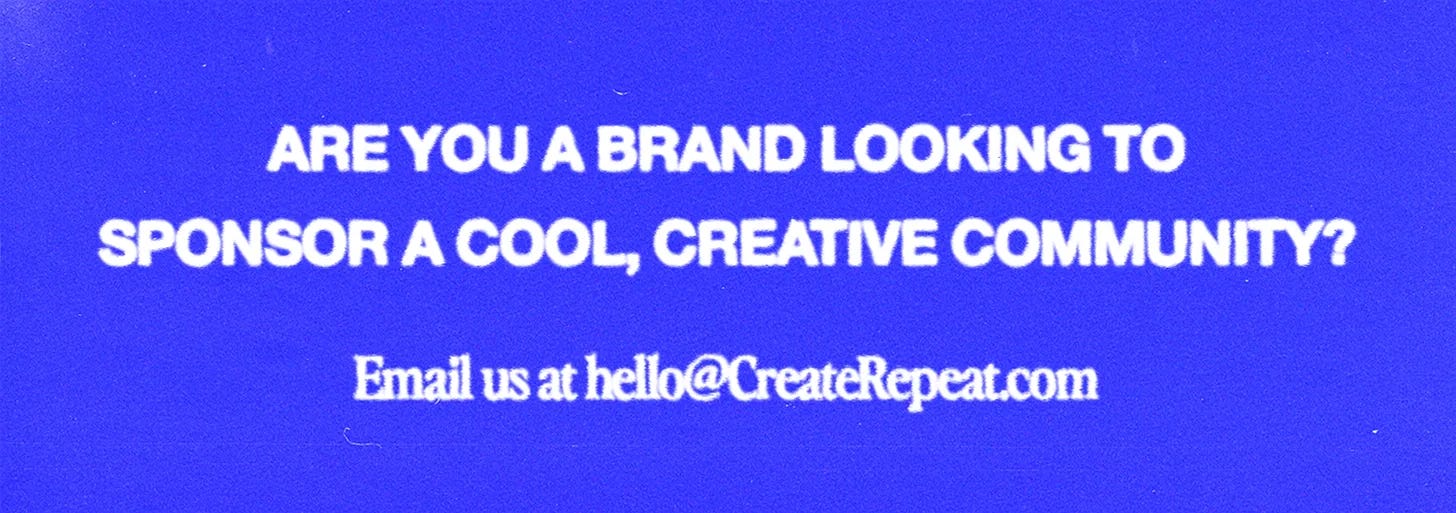Drowning in Content, Gasping for Creativity
What if consuming less is the key to creating more?
The other day, I did something that felt almost unnatural: I spent an entire Sunday creating just for fun. No goal. No deadline. No pressure to share it online. Just me, my ideas, and the simple joy of making something from nothing.
It was healing, cathartic, and honestly, fun.
No coincidence… It was also the least amount of screen time I’ve had on my phone all year.
That night, I had a thought that gave me pause:
When was the last time I made something just for myself?
Most of my days are spent creating—whether it’s for clients, for projects, or for all the lovely people reading this now. And when I’m not creating, I’m consuming. Watching something on TV. Mindlessly scrolling. Or more accurately, doing both at the same time.
I think we need to talk about consumption, especially for creatives. Because if we’re not careful, the very thing that inspires us can also drown us.
It’s never been easier for someone to discover your work. But it’s also never been easier for it to be forgotten.
Our world is designed to keep us consuming. Endless scrolls, autoplay videos, algorithmic feeds engineered to show us exactly what we want, exactly when we want it.
Everything is built to hold our attention, to keep us watching, clicking, and scrolling. And in the moment, it can even feel productive—like staying informed is the same as taking action.
But it’s not. It’s passive. And passivity is the enemy of creativity.
The more we consume, the less space we leave for our own ideas. Studies show that overconsumption of digital content shortens our attention spans and weakens our ability to focus deeply. Our minds become cluttered with other people’s thoughts, leaving little room for our own originality.
And even if our work gets seen—does it get remembered?
But something interesting happens when we stop. When we step away from the constant intake and allow ourselves to sit with our thoughts, creativity starts to flow again. Ideas emerge. Connections form. The brain, given the space to wander, does what it’s meant to do: it creates.
I noticed it that Sunday. Without the constant flood of content, my brain felt clearer. Instead of reacting to things I saw online, I was engaging with my own ideas. I wasn’t thinking about what would perform well, what people would like, or what fit into an algorithm. I was just making.
That kind of freedom is rare in a culture where everything we create is measured, tracked, and optimized. But it’s also where the best work comes from. The ideas that feel the most real, the most personal, the most us come when we give ourselves the space to think beyond what we just consumed.
I’m not saying stop consuming entirely—great art, books, films, and ideas inspire us. But there’s a balance. And for many of us, that balance is off.
Not all consumption is bad—it’s about what and how we consume. Think of it like a diet. If you eat nothing but junk, your body starts to feel sluggish. If you overeat, even the good stuff can weigh you down. But if you’re intentional and choose what fuels you, you get stronger, sharper, more energized.
Creativity works the same way.
When I was first finding myself as a creative, I consumed art differently. I still remember watching Whiplash for the first time. I sat in stunned silence as the credits rolled, replaying every moment in my head. That movie lived with me for weeks. It changed the way I thought about ambition, obsession, and mastery.
Same with when I first heard Good Kid, M.A.A.D City. I had that album on repeat for months, picking apart every detail—the storytelling, the production, the transitions between tracks. I wasn’t just listening, I was studying. Absorbing. Letting it shape me.
Now I’ll watch something, like it, and a day later, it’s gone. The sheer volume of content wipes it from my memory, like clearing out my iPhone’s storage when it gets full. My brain doesn’t even get the chance to hold onto it.
That’s the danger of overconsumption: we end up filling ourselves with so much, we don’t actually keep anything.
So if our brains are constantly making space, we must be intentional about what stays. What moves you? What lingers? What actually shapes the way you see the world?
In the end, what we create is only as deep as what we hold onto.
If you’ve made it this far, here’s your challenge: for at least one day, consume less and create more.
When you wake up, resist the urge to check your phone. Instead, grab a notebook and write down whatever comes to mind. Throughout the day, instead of letting another episode autoplay, pick up a sketchbook, brainstorm an idea, or build something just for fun. And when you feel the pull to scroll, pause. Sit with your own thoughts. See where they take you.
Creativity needs space. When we stop filling every gap with noise, our best ideas have room to surface.
Try it for a day. See what happens.
You might be surprised at what you make. I know I was.
Keep creating and repeating,
- Zack
Every week, we use Sublime—the (not boring) knowledge tool that lets you save one thing, discover one hundred more—to find these inspiring links. So we partnered with them to share it with the Create.Repeat community.
It’s like Notion meets Tumblr. By far our favorite tool for mood-boarding and discovery.
Give it a try.
🪨 Make Something Heavy: An essay from Working Theory’s about the importance of building weighty work instead of chasing fleeting trends.
🍊 Foundry by Basement: A distinguished & ever-evolving catalog of typefaces. Ready to use on your next big project
🌳 Urban Village by SPACE10: A forward-thinking project imagining sustainable, community-driven living spaces.
📝 Sketchplanations: An archive of hand-drawn sketches that simplify complex design concepts.
If you believe in what we’re building with Create.Repeat, the best way to support us is by joining Take It or Leave It—our weekend newsletter exclusively for paid subscribers.
It’s more than just a newsletter. It’s a direct way to back the work we do, helping keep Create.Repeat independent, creative, and growing.
Each week, we dive into community questions submitted through Substack Chat, offering our honest take on the creative process, career struggles, and everything in between. It’s part advice column, part mood board, and part behind-the-scenes look at what it really takes to stay creative.
For just $5/month, you get exclusive content while directly supporting the mission of Create.Repeat. And if you haven’t used your free trial yet, now’s the perfect time to start. No pressure, just inspiration.
This week’s advice…
This week’s spotlight is on Ryann Graham, a content creator based in Los Angeles, originally from Kansas City, MO. Whether he’s editing for brands or making content for himself, Ryann’s approach stays the same: have fun with it.
Right now, Ryann is balancing freelance editing for brands while building his own content presence. He’s proof that you don’t have to choose between working for others and working for yourself. The key is making space for both and letting each one pour into the other.
Make Content You Actually Enjoy.
“Start by making content you enjoy for yourself the most. If you’re laughing and vibing with what you create, your audience will find you.”
The Takeaway
If you’re having fun, you’re on the right track. The right audience isn’t something you chase, it’s something you attract. Stay in motion, stay curious, and let your creativity lead.
Create.Repeat is a community for creatives.
The Create.Repeat Substack is a project designed to be a weekly diary on creativity. Sharing inspiration for artists to keep creating and repeating.
Written and curated by Zack Evans & James Warren Taylor
Each week we will be sharing recent thoughts on creativity, some links helping us stay creative, and a talent show featuring an artist from the community. Thank you for engaging with us.
History repeats. Create the future.



















This hits. Especially the part about how even “good” content fades fast when there’s too much of it. We’re in a constant loop of consuming—sometimes even while we’re creating. But the best ideas? They usually show up when we let our brains breathe.
One thing we’ve noticed working with creatives: overconsumption doesn’t just drain originality—it blurs identity. When you’re always taking in other people’s visions, it’s easy to lose sight of your own. The antidote? Intentional inspiration. Instead of scrolling aimlessly, seek out work that sticks—the kind that rewires how you think.
Also, love the “consume less, create more” challenge. We’d add this: when you do consume, do it slowly. Revisit the things that move you. Let them marinate. It’s not about cutting off inspiration—it’s about making sure what you take in shapes you, not just fills you.
More creating, less reacting. Always a good move.
Creating > Spending